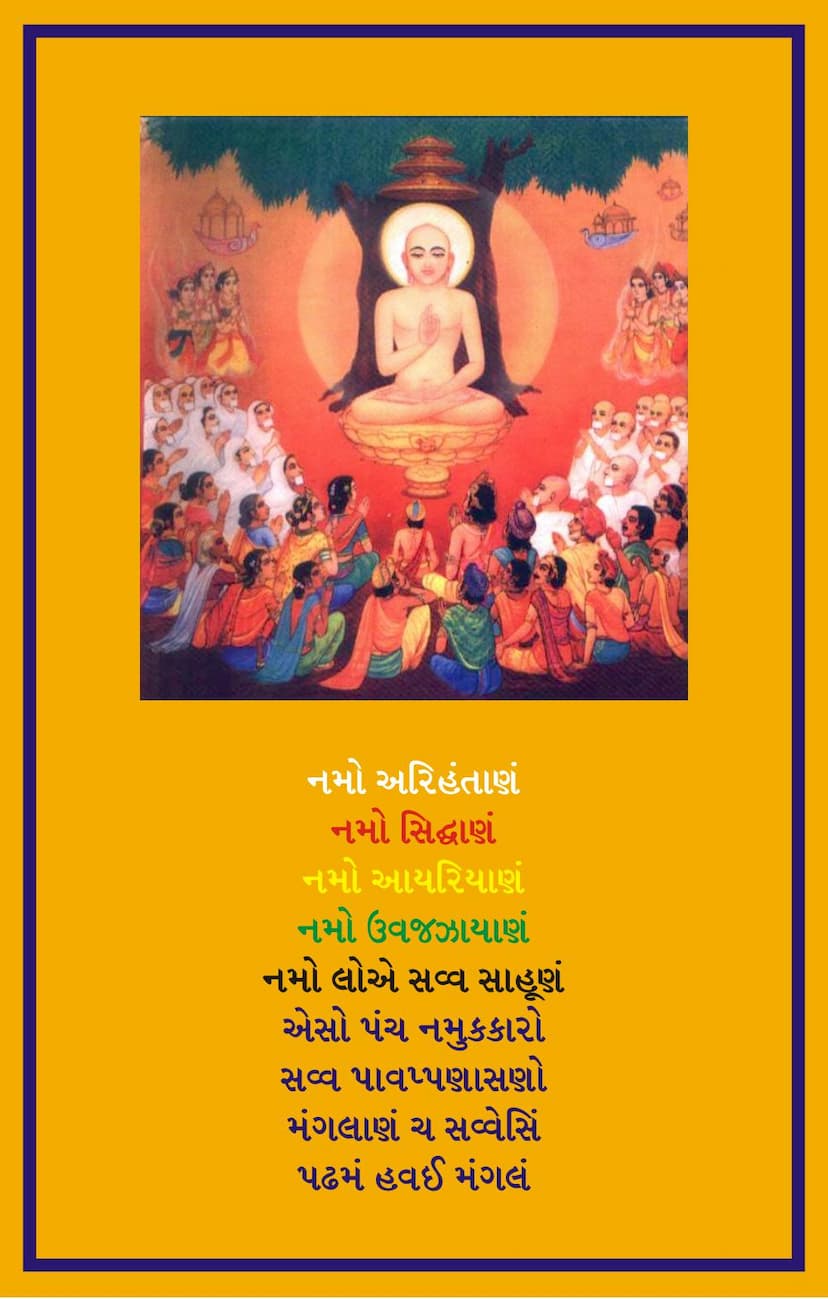Agam 06 Ang 06 Gnatadharma Sutra Part 03 Sthanakvasi
Added to library: September 1, 2025

Summary
This Jain text, the Gnatadharma Sutra, Part 03, attributed to Ghasilal Maharaj, is the third volume of the sixth Anga of the Agam literature. Published by A B Shwetambar Sthanakvasi Jain Shastroddhar Samiti, it focuses on the life and teachings of Lord Mahavir.
The text begins with the standard Jain invocation and then introduces the publication plan. It is presented with a commentary by Ghasilal Maharaj and includes Hindi-Gujarati translations. The specific volume being summarized, Part 03, follows a detailed biographical sketch of Seth Tarachandji Saheb Gelda, a prominent Jain philanthropist from South India, highlighting his contributions to educational and medical institutions.
The latter part of the provided text delves into the rules and regulations for Swadhyay (self-study) of the sutra. It outlines specific times for study and provides a comprehensive list of 32 occasions for Asttadhyay (avoiding study), categorized into:
- 10 occasions related to the sky: Including events like meteor showers, celestial fires, thunder, lightning, and atmospheric phenomena like thick fog.
- 10 occasions related to the physical body: Such as seeing bones, flesh, blood, excreta, or being near a cremation ground.
- Specific times related to eclipses: Lunar and solar eclipses are mentioned as periods of avoided study.
- Times related to royal and national events: Such as wars or deaths of rulers.
- Festivals and specific days: Four major festivals and four following days (Pratipada) are listed as times for avoided study.
- Time-specific prohibitions: Avoiding study during dawn, dusk, noon, and midnight, as well as a period around sunrise and sunset.
The text also provides a detailed table of contents (Vishayanukramanika) for the third part of the Gnatadharma Kathanga Sutra, outlining the chapters and the subjects covered, which include the character descriptions of various individuals like Tetliputra Pradhan, Nandiphal, Dharmaruchi Angar, Sukumarika, and Draupadi.
The latter portion of the provided text specifically begins to detail the Fourteenth Adhyayana (chapter) concerning the character of Tetliputra Pradhan. It then continues into the Fifteenth Adhyayana, focusing on Nandiphal and its significance, and the Sixteenth Adhyayana, detailing the character of Dharmaruchi Angar and the story of Sukumara. The narrative then shifts to the story of Draupadi, detailing her birth and marriage arrangements, including the complex circumstances involving King Kankarak, his cruel actions towards his sons, the scheme of Queen Padmavati to save her newborn son Te.tli.putra, his upbringing by a goldsmith's daughter, his eventual marriage to Draupadi, and the subsequent complex events leading to the rise of Kanka-dhwaj as king. The text further narrates the story of a mendicant's (Dharmaruci's) unfortunate end due to consuming poisoned Tumbika, and the subsequent rebirth of the soul as a celestial being. The narrative then shifts to the character of Draupadi, her birth to King Drupad and Queen Chulani, her marriage to the Pandavas, and the events surrounding her Swayamvar. It includes detailed accounts of the invitations sent to various kings and Krishna Vasudeva, and the subsequent marriage ceremony. The text also touches upon the concept of Dharma and its importance, contrasting it with actions that lead to suffering and hellish states, emphasizing the need for righteous conduct and adherence to the teachings of Lord Mahavir.
The text concludes with a commentary on the importance of Dharma, especially Ahimsa (non-violence), and critiques practices like idol worship, arguing that they are contrary to Jain principles and lead to the accumulation of negative karma. The commentary emphasizes the true path to liberation through adherence to the teachings of the omniscient Tirthankaras.